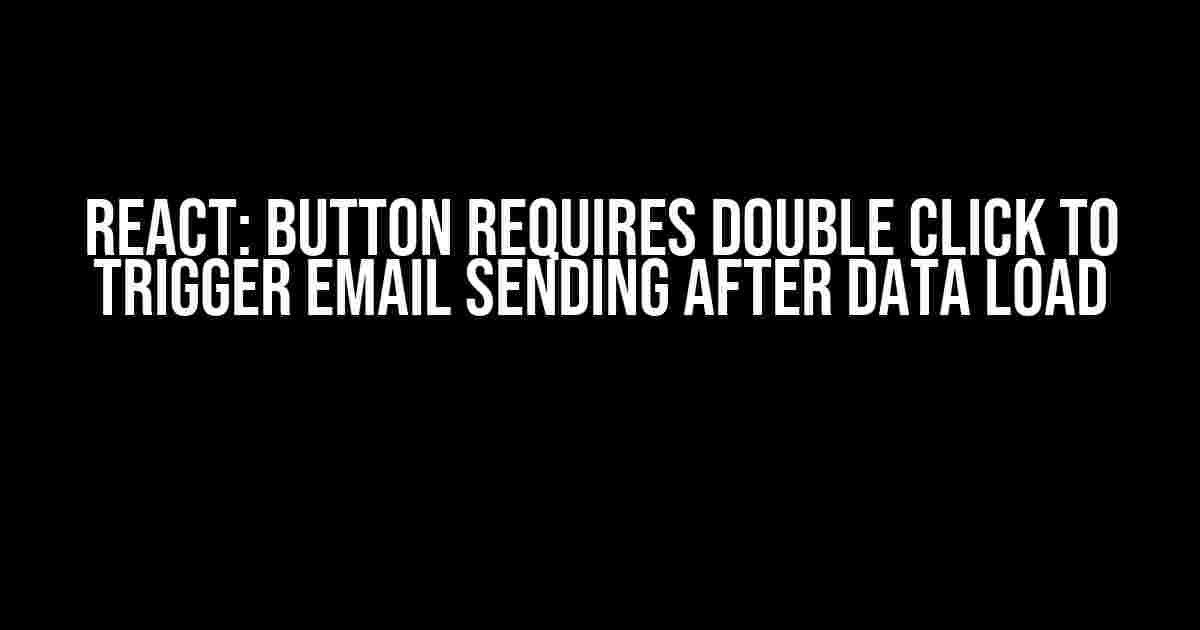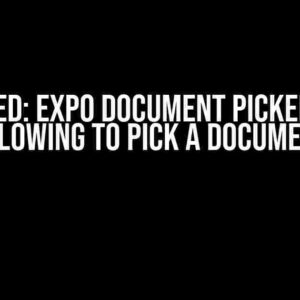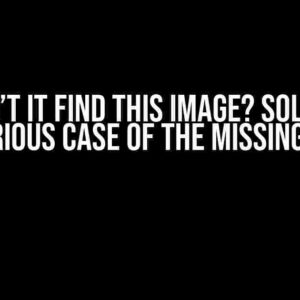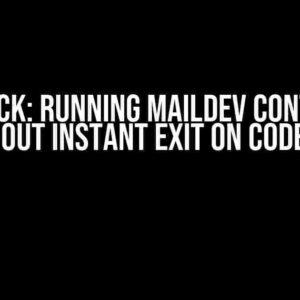Are you tired of experiencing frustrating issues with your React application, where a button requires a double click to trigger an email sending action after data load? You’re not alone! This issue is more common than you think, and it’s often caused by a simple misunderstanding of how React handles state changes and event handling.
Understanding the Problem
Before we dive into the solution, let’s take a step back and understand what’s causing this issue. When you load data in your React application, the component’s state changes, and React re-renders the component. However, if you have an event handler attached to a button that triggers an email sending action, it’s possible that the event handler is not being executed on the first click.
This is because React uses a concept called batching, which means that it groups multiple state updates together and re-renders the component only once. This optimization technique improves performance, but it can sometimes cause issues like the one we’re experiencing.
Causes of the Issue
There are several reasons why your React application might be experiencing this issue:
- Incorrect event handling: If you’re using an arrow function or an inline function as an event handler, it might not be executed correctly.
- Asynchronous data loading: If you’re loading data asynchronously, the component might not be fully rendered before the event handler is attached.
- Multiple state updates: If you’re updating multiple states in a single function, it can cause React to batch the updates, leading to the issue.
- Third-party library conflicts: Sometimes, third-party libraries can interfere with React’s event handling mechanism, causing issues like this.
Solutions to the Issue
Now that we’ve identified the possible causes, let’s explore some solutions to this issue:
Solution 1: Use a Debounce Function
One way to solve this issue is to use a debounce function, which ensures that the event handler is executed only after a certain delay. This can help prevent the issue by allowing the component to fully render before the event handler is executed.
import debounce from 'lodash.debounce';
const handleSendEmail = debounce(() => {
// Your email sending logic here
}, 500);
Solution 2: Use a Ref to Check if the Component is Fully Rendered
Another way to solve this issue is to use a ref to check if the component is fully rendered before executing the event handler. You can create a ref using React’s createRef API and check if the ref is null before executing the event handler.
import { createRef } from 'react';
const componentRef = createRef();
const handleSendEmail = () => {
if (componentRef.current) {
// Your email sending logic here
}
};
return (
<div ref={componentRef}>
<button onClick={handleSendEmail}>Send Email</button>
</div>
);
Solution 3: Use a Timeout to Allow the Component to Fully Render
Another solution is to use a timeout to allow the component to fully render before executing the event handler. This can be done using the setTimeout function.
const handleSendEmail = () => {
setTimeout(() => {
// Your email sending logic here
}, 0);
};
Solution 4: Avoid Using Arrow Functions as Event Handlers
If you’re using an arrow function as an event handler, try replacing it with a traditional function declaration. This can help ensure that the event handler is executed correctly.
function handleSendEmail() {
// Your email sending logic here
}
Solution 5: Verify Third-Party Library Conflicts
If you’re using third-party libraries, verify that they’re not causing conflicts with React’s event handling mechanism. Try removing or updating the library to see if it resolves the issue.
Best Practices to Avoid the Issue
To avoid this issue altogether, follow these best practices:
- Avoid using arrow functions as event handlers: Instead, use traditional function declarations or class methods.
- Use a debounce function or a timeout to allow the component to fully render: This can help prevent the issue by ensuring that the component is fully rendered before the event handler is executed.
- Verify third-party library conflicts: Make sure that third-party libraries are not causing conflicts with React’s event handling mechanism.
- Use refs to check if the component is fully rendered: If you need to execute an event handler immediately after the component is rendered, use a ref to check if the component is fully rendered.
Conclusion
In conclusion, the issue of a button requiring a double click to trigger an email sending action after data load in a React application can be caused by several factors, including incorrect event handling, asynchronous data loading, multiple state updates, and third-party library conflicts. By understanding the causes of the issue and applying the solutions and best practices outlined in this article, you can ensure that your React application behaves as expected and provides a seamless user experience.
| Solution | Description |
|---|---|
| Debounce Function | Ensures that the event handler is executed only after a certain delay. |
| Ref to Check Component Rendering | Checks if the component is fully rendered before executing the event handler. |
| Timeout to Allow Component Rendering | Allows the component to fully render before executing the event handler. |
| Avoid Arrow Functions as Event Handlers | Ensures that the event handler is executed correctly. |
| Verify Third-Party Library Conflicts | Verifies that third-party libraries are not causing conflicts with React’s event handling mechanism. |
By following these solutions and best practices, you’ll be well on your way to creating a seamless and user-friendly React application that behaves as expected.
Frequently Asked Question
Get the answers to your React conundrums and unleash the power of efficient coding!
Why does my React button require a double click to trigger email sending after data load?
This issue often arises when the button’s `onClick` event is not properly bound to the function that sends the email. Check if you’re using an arrow function or a callback function to handle the click event. Ensure that the function is correctly bound to the component’s `this` context.
Could it be related to the data loading process?
Yes, it’s possible! If the data load is asynchronous, the button might not be fully rendered when the data finishes loading. Try using `useState` or `useEffect` to manage the data loading process and ensure the button is only clickable when the data is fully loaded.
What if I’m using a library like Redux or MobX for state management?
When using a state management library, ensure that the button’s `onClick` event is properly connected to the action creator or the store’s dispatch method. Double-check your library’s documentation for the correct way to handle events and dispatch actions.
Could this be a problem with the email sending function itself?
Yes, it’s possible! Review the email sending function to ensure it’s not causing any blocking or synchronous operations that might delay the email sending process. Consider using a debouncing or throttling approach to handle multiple rapid-fire clicks.
How can I debug this issue more effectively?
Use the React DevTools to inspect the component’s state and props during the data loading process. Set breakpoints in your code to identify the exact point where the issue occurs. You can also add console logs or use a debugging library like React Debugger to gain more insights.





